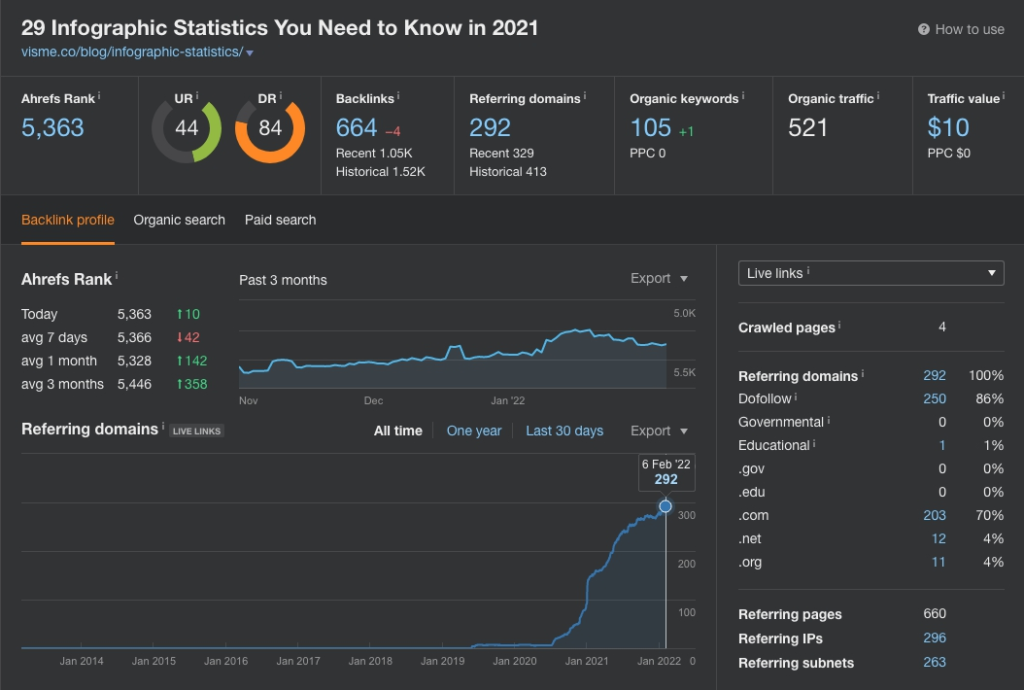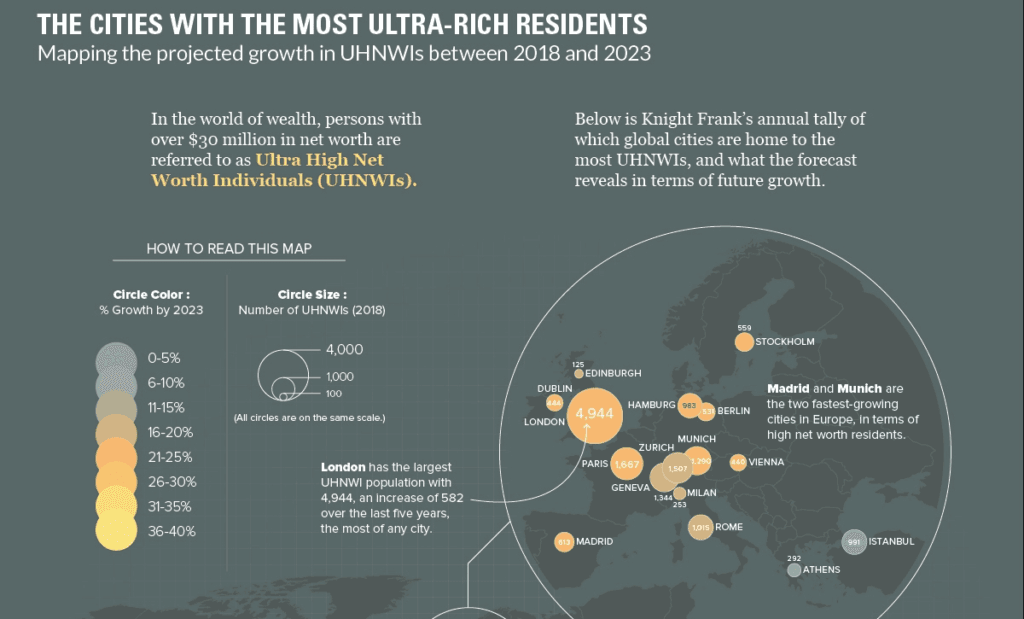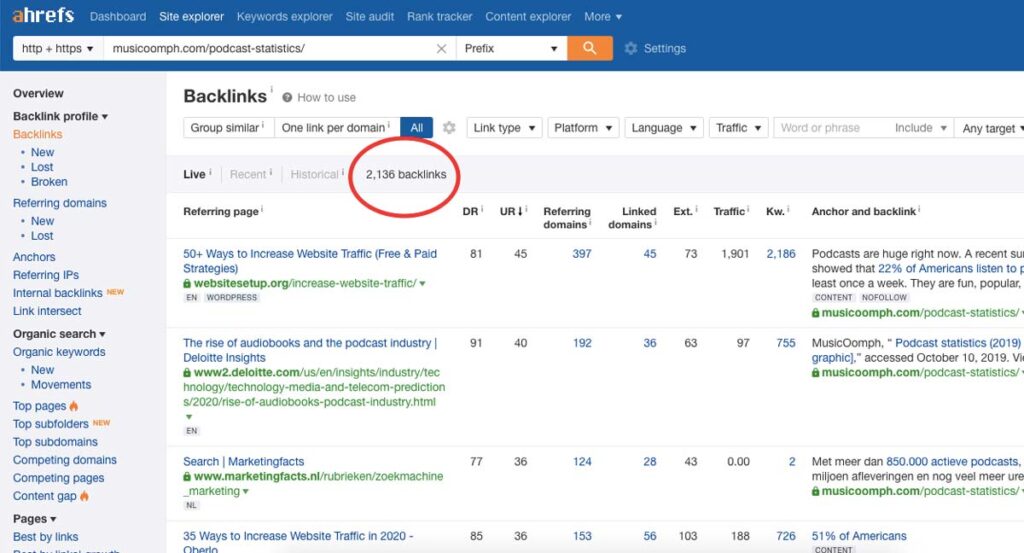How to Use Infographics for Link Building
They say one image is worth a thousand words, but one can be worth a thousand links for link building. And infographics show it perfectly.
Infographics are a simple way to make complex things understandable.
With infographics, you can quickly tell your audience about any event, phenomenon, or process, highlighting only the essential points and discarding everything else.
From this article, you will find out what kind of infographics there are, how to use them for link-building, and how effective they can be.
Table of Contents
Why you should use infographics for link building
There are several reasons why infographics backlinks are so effective:
- Perhaps unsurprisingly, our brains process information in a visual format much better than text. It has been reported that we process visuals 60,000 times faster. That makes sense, and it's one of the reasons why well-designed infographics remain one of the best ways to increase engagement.
- Users are eager to share helpful information, especially when framed in a beautiful, original, straightforward design. Infographics are often shared on social networks. People post them on their sites and email them to colleagues and friends.
- When infographics are shared on social networks and websites, the brand travels with them; your logo and link to the company website are always there. You become more popular.
However, there is no reason why you can't use infographics to supplement your other content efforts.
What results you can get
While writing this article, I came across some exciting examples showing you the results you can get when using infographics to get backlinks.
The main appeal of infographics for getting backlinks is that this method produces results even after many years.
Email Marketing Infographic (Omnisend.com)
As a first example, here are statistics for an infographic published 3-4 years ago. In that time, it received 350 referral domains and 630 links.
Of course, it is not the best result, but consider the number it will get in the next few years. Steady growth is sometimes much better.
29 Infographic Statistics (Visme.co)

The second example showed better results in a shorter period of time.
It was published less than two years ago, and the article has already received 292 referral domains and 690 backlinks. Over the next few years, this example will significantly overtake the first one.
Types of infographics that you can use
There are many types of infographics below; we describe some of them.
Informational infographics
Suppose it is necessary to present a new concept to the audience, highlight an important issue, or overview a particular discussion subject. In that case, the informational format is the best fit.
Such an infographic is often a set of sections with numbered subheadings.
Numbering facilitates the reading and perception of the information presented. Headings with numbers are easier to read for the audience.
Timeline infographics

A timeline perfectly visualises the history of a phenomenon or subject, highlighting key dates. Also, this type of infographic is used to create retrospectives.
People perceive time as a particular line in space. That's why a timeline with visual elements describing turning points of the specified period allows the audience to imagine time intervals more clearly.
Statistical infographics

This type is optimal for presenting research results and information from several sources and confirming an idea with statistical data.
It is the data that is the basis of such infographics. They are linked into a single structure with the help of visual elements and the creation of a layout.
Geo-Infographics

How do you collect and visualise an extensive array of geodata or demographic information? In this case, there are geographic infographics.
The main element here is maps. Different types of data are conveniently displayed in the form of map charts. If you just want to show places on a map, this is usually done using icons with captions.
Process Infographics

Chronological infographics highlight the events on a timeline, while procedural infographics help summarise and describe the stages of a process.
For a visual breakdown of the process into stages, the sequence of critical elements is often used, arranged vertically or horizontally.
The numbering of stages increases the receptivity and visibility of visual information. You can introduce various guiding cues in arrows, lines, and geometric shapes for the same purpose.
List infographics

Compilations of various tips, lists of resources, or examples are helpful to give in a list. This is what a particular type of infographic is for.
This template is quite simple to implement. It is only necessary to make a competent list and make it attractive to the target audience.
All kinds of visual elements – icons and pictograms as list markers, unusual fonts in contrasting colours to highlight each item, etc.- will help design.
Hierarchical infographics

This type is used to organise blocks of information by importance. An illustrative example of a hierarchical structure is Maslow's pyramid, at the base of basic human needs. The most exalted needs occupy the highest and the smallest segment in terms of area.
Comparison infographics

Choosing from a large number of options is difficult for many people. A comparative infographic allows helping people to compare several options or demonstrate the benefits of specific solutions.
This model is usually implemented based on a vertical or horizontal separation of two alternatives. The use of contrasting colours reinforces the difference.
The particular option the audience needs to consider is highlighted in the brightest and most saturated hues.
How do you create an original infographic?
To create a compelling infographic, it must contain a set of essential elements:
- Infographics don't start with graphics but with information. So the first step is making an infographic: think through the content and spell out the content for the future picture.
- Along with the preliminary information collection, start from the tasks and goals to choose a convenient format and template for infographics. For example, if the infographic is part of the presentation – specify where you will show this presentation.
- Working on an infographic is done step by step, just as a drawing is done. You should first outline the general arrangement of the elements and then detail them.
- When you understand the content of the infographic, its technical requirements, and the basic arrangement of the elements, you can proceed to the last step: drawing the visible part.
Tools for creating infographics
You can use graphic editors to create infographics – they can have ready-made templates for infographics for different tasks and goals of the business, which will undoubtedly simplify the work.
For example, tools for creating visual content like Canva, Crello, and Gravit Designer are suitable for non-designers.
Canva
Canva is a handy tool to make infographics yourself for any purpose. For example, there are infographic templates for education or business.
Depending on what information and form you want to display, you can also choose among templates for timelines, charts, and processes. A lot of templates are free.
Crello
Crello is an online editor for creating graphics and content for social networks, video hosting sites and websites. With the Crello image editor, companies and ordinary users can create content and download photos and stock images. The editor allows for optimising the process of creating graphic materials.
Gravit Designer
Gravit Designer is a full-featured free design app that will help marketers and other professionals who need to create a design product quickly and easily.
It has a user-friendly interface and many icons, pictures, and forms for more accessible work and tutorials on making infographics and other marketing materials.
How to get backlinks from infographics

Now that you know what infographics are and how to create them, let's learn how to properly use them to attract tons of backlinks to develop your site.
Advertising
The most effective way to link-building infographics is probably through simple advertising on social media. This way, it can quickly get an extensive reach, and people will know about it.
For advertising, you can use any means available, such as targeted advertising on Facebook, Twitter, Instagram, and other suitable platforms.
Targeted advertising allows you to choose the people who will see your ad, so you can choose the categories of people who will be most interested in your infographic.
This will help get views, and some, if they are interested in the infographic, will share it on their social networks, do reposts, etc. Website and blog owners can even post it on their blogs and leave a link to your site.
The guys from Ahrefs told us well about getting a link in Google Ads in their video on their YouTube channel.
Post infographics
In addition to advertising, the next best option for promoting and getting backlinks from infographics is to post them on sites. Here is a list of sites that show the best results:
- Reddit is a vast collection of forums where people can share news or content and comment on others' posts. Reddit is divided into over a million communities, known as “subreddits,” each dedicated to a different topic, even infographics. If you post your infographic there, it will go viral.
- Visual is structured as a platform for infographics and a marketplace and community for publishers, designers, and researchers. The site allows users to search for images by description, tags, and sources in categories ranging from education to business or politics. Users can post infographics on their profiles and share them on their social networks.
- Cool Infographics presents some of the best examples of infographics online and in newspapers.
- Designers around the world use Behance to showcase their latest work. If you've created an infographic you're proud of, you can showcase it here and get a quality backlink.
- Flickr is a site that connects art galleries with a community of millions of amateur and professional photographers and designers. Although Flickr is primarily used for photos, you can use the platform to showcase your infographics.
- Pinterest is a social networking site where users can create virtual topic boards with various images. Pinterest is also often referred to as a kind of visual search engine. Pinterest is used by 250 million people each month, making it the perfect place to post infographics.
Of course, these are only a few websites you can use to post your infographics. If none of the above suits your needs, plenty more to try.
Email Outreach
If specific websites share a theme with your infographic, you can try Email outreach to contact the owners and see if they are interested in posting it.
The principle is simple, you create a list of websites, such as blogs on SEO or marketing, and write a proposal to use your infographic to their owners.
For this to work, try to personalise every email. Otherwise, it might look like simple spam, and the owner won’t read it through.
If the website owner likes your offer, he will add the infographic to the article on the subject and link where he got this infographic.
That's called an email outreach; you just write to bloggers and ask for something on mutually beneficial terms. Try to make your offer benefits for both parties. If the website owner sees no profit in a partnership, he will likely refuse.
The more sites you write to, the better; make a list beforehand, saving time.
Author Bio: Michael Kuzmin, founder of 10х Agency. More than ten years in Sales & Marketing. For the past four years specialising in link-building services and improvement of Google ranking.
